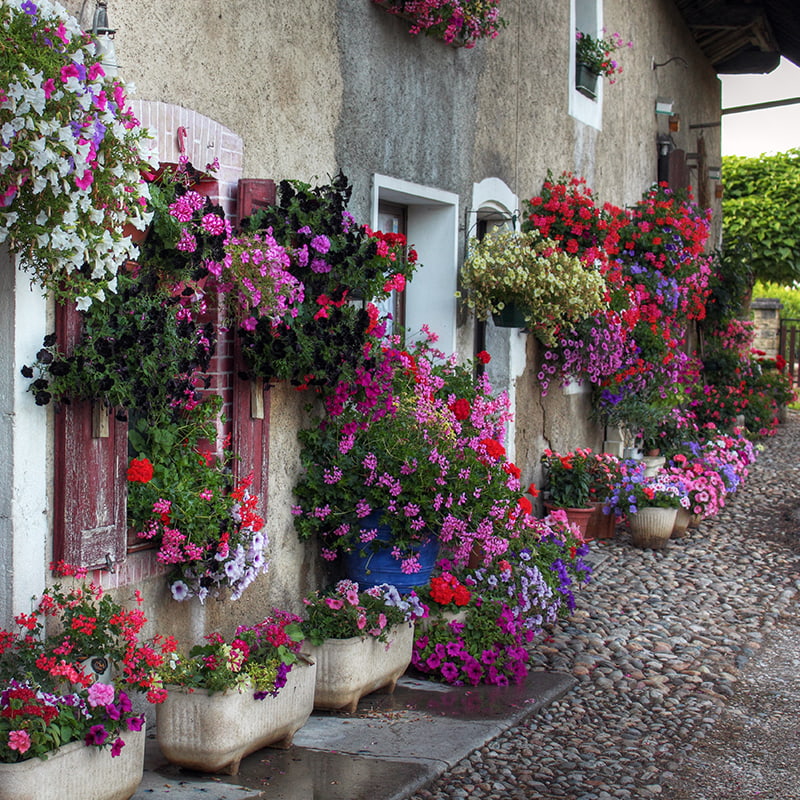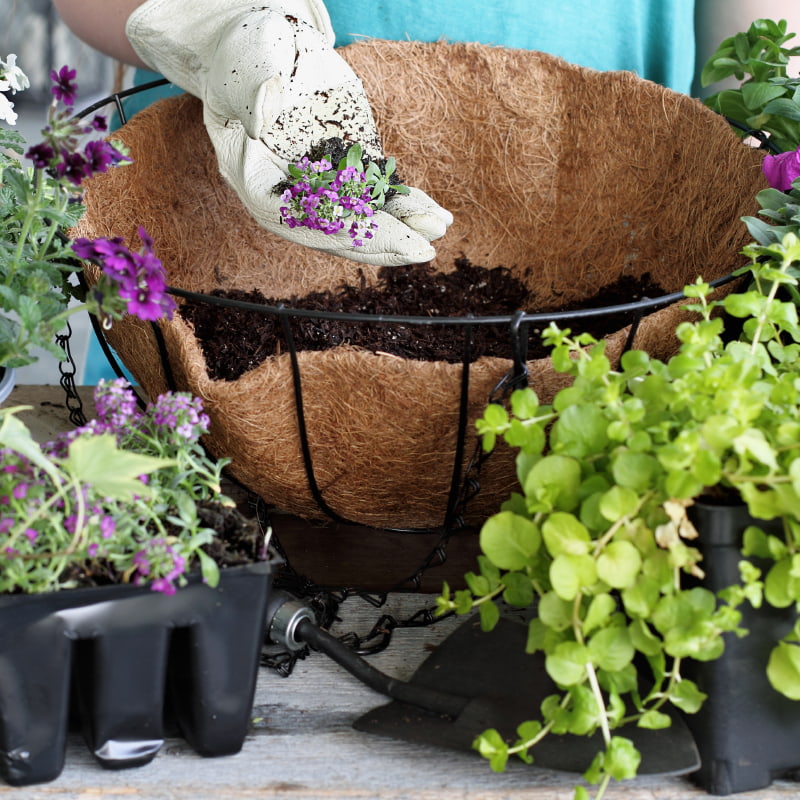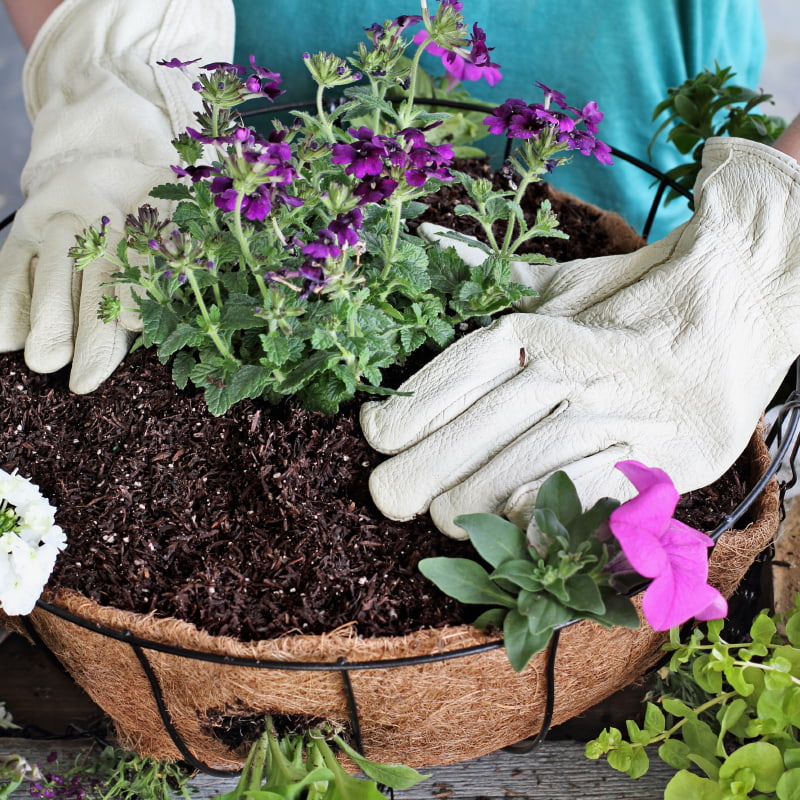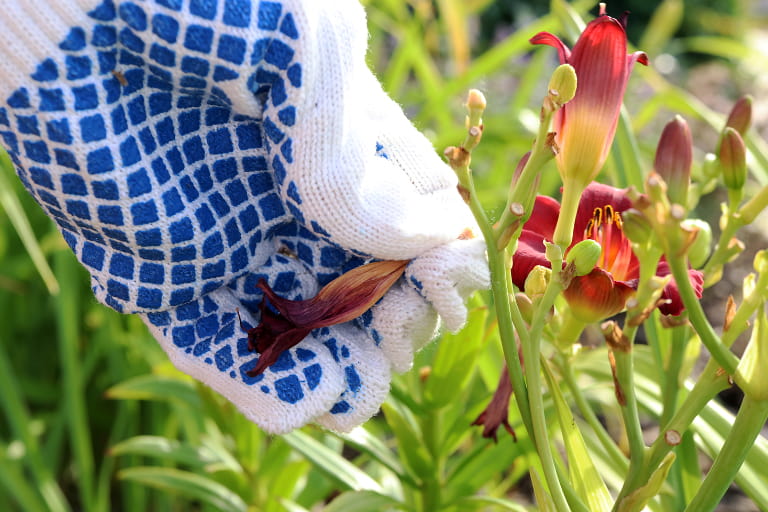How To: A 6-Step Guide To Planting Up Hanging Baskets
Hanging baskets and wall mangers are perfect for bringing a splash of colour or relaxing aromas to any available space. Hanging planters can really help to brighten up otherwise dull walls and fences. They’re a great alternative for growing fruits and vegetables. They’re also the perfect solution for brightening up patios and outdoor seating areas.
Hanging baskets and wall mangers really are the ultimate containers for beautiful visual displays of flowers and interesting foliage. You can even use them for growing fruits and vegetables.

Considerations and planning
When you’re planning to plant up your hanging baskets there are a few things to consider:
- Select the right hanging basket, wall manger or wall trough to suit your situation
- Choose the right planting medium and feeding regime for your plants
- Drainage
- Moisture retention
- How and where you plan to hang the final planted up hanging baskets

Once you’ve chosen the plants you want to use, you’ll need to choose a top quality planting medium that offers good drainage and moisture retention. Buying a premixed medium or adding your own perlite will help here.
Coco liners
Using a coco liner in your hanging baskets or managers is a top garden tip. The coco liners work to keep the compost in the container and allow good drainage, while also helping to retain moisture. The coco fibres trap many times their weight in water and feed. This also allows you to go longer between waterings.
Location
Choosing the right location and using suitable hanging basket brackets and chains is important. Using the right fixings is also important, especially if you want your hanging baskets and wall manger creations to remain in place season after season.
Hanging basket plants all like a varied level of sunlight, with some liking more than others. This is an important factor to consider, more so with edibles. Most edibles like a minimum of 6 hours sunlight per day with strawberries and tomatoes, loving as much full sunlight as you can give them. Position your containers well and they’ll reward you with colour, aromas as well as some beautifully fresh, tasty treats.
Plants for hanging baskets
The following table is an example of the plants and fruits and vegetables that thrive in hanging baskets.
| Flowers | Fuchsia, Petunia, Tuberous Begonia, Bidens, Verbena, Impatiens, Lobelia, Geranium (Pelargonium) |
|---|---|
| Foliage | Felicia, Helichrysum, Lamium, Coleus, Cineraria, Nepeta, Sage |
| Vegetables/ other edibles |
Tomatoes (Tumbler), Strawberry, Chive, Thyme, Marjoram, Trailing rosemary |
Garden tip: If you’re looking for hanging basket ideas, a good place to start is by planting Geraniums. Planting Geraniums produce lots of bright, colourful flowers over the course of the summer. Planting them in the in the middle of the basket provides height and coverage as they grow out. For the outside of the basket, alternate Petunias and Lobelia. Once established, these plants provide side coverage as they flow over the edge of the basket in the coming weeks.
Planting
| 1. | Line the basket with a fresh coco liner. |
| 2. | Place a suitable saucer, small plate or circle of polythene in the bottom of the basket to act as a reservoir and to stop water draining straight through (this allows the baskets to hold a small amount of water and feed in reserve). |
| 3. | Half fill the basket with a good quality potting compost, such as GrowDog Soil and Perlite Mix, which is highly suited to container growing with its good drainage and moisture retention qualities. This is also a great time to mix in some Miracle-Gro all purpose plant food, which can be the difference between verdant foliage and an abundance of flowers or a meek, washed out display. |
| 4. | For trailing plants, make holes in the side of the liner, place the root-ball in a used toilet roll holder (to protect the rootball) and pass it all through the hole – covering with more compost. |
| 5. | Plant up the top of the basket with upright bushy plants (or fruit/vegetables) making sure you have plenty of side coverage from trailing plants around the edges. |
| 6. | Creating a full basket at planting time will produce a much more colourful and dramatic display. |
Garden tip: Ensure you leave yourself a 0.5 to 1″ gap from the compost to the top of the coco liner. This helps you avoid a soaking when you water. Water will run off the top of the soil (or down your arm and soak your shirt).

Feeding and watering
Good quality composts allow good drainage and retain moisture. They’ll also contain enough food in them for the first couple of week. This will soon run out of steam with young, greedy plants consuming it. After the first few weeks’, you’ll need to feed weekly or use a continuous, slow-release feed. Slow-release feeds last you the season. Use slow release fertilisers like Miracle-Gro all purpose plant food.
Feeding and watering your containers will give you striking, verdant foliage and an abundance of flowers. The alternative is meek, washed out display.
You can help yourself and make your life easier by using water saving gel or water saving crystals. There are even water saving crystals with added fertilizer. The water saving gel’s work to absorb over 400 times their weight in water and slowly release it. Water saving gels reduce the reliance on you needing to water as often. They give you more free time to enjoy an evening walk or just relax with a cold drink.
Feed & Forget
Access to regular feed and water allows your plants to flourish throughout the summer and into autumn. If you want a simple feed-and-forget solution, use Miracle-Gro all purpose continuous release plant food to your hanging baskets. These feeds work for up to 6 months, covering you for the whole season.
Regular Feeding
If you prefer to feed your plants more regularly, use an all-purpose soluble plant food, liquid concentrate. Tomorite liquid Tomato concentrate also gives fantastic results. Regular feeding will reward you with big, beautiful baskets, full of colour or fruit & veg for months on end.
Maintain Moisture Levels
In the height of summer and during dry periods, your hanging baskets and wall mangers need watering every day. Always ensure the compost remains moist and doesn’t dry out and avoid your plants wilting. Using watering lances or hose guns with your garden hose pipe makes this job really easy.
Seasons
Whether your planting up for summer or winter, hanging baskets can provide a flash of mood-changing colour. And cast a calming aroma on a gentle breeze. Choosing vibrant bedding plants provides a short-term, season-long show. Planting herbs, shrubs and evergreens gives you a longer-lasting display. Summer hanging baskets are suitable for many annual and perennial plants.
Hanging baskets are suitable for planting up and hanging out after the threat of frost has passed. This is usually around April/May through to September/October. Hanging baskets are easy to plant up to suit your needs.
Dead heading
Deadheading is the term used for the removal of flowers from plants when they are fading or dead. Gardeners remove old, fading flowers to keep plants looking attractive and to encourage the plants to produce more blooms. It’s a good idea to wear suitable gardening gloves when deadheading. The wilted, and often wet, flower petals can leach and stain your skin and clothes.

Dead-heading can be done on any non-fruit bearing, flowering plants, in beds and borders, containers or hanging baskets.
Garden tip: Don’t deadhead fruiting plants, as you’ll likely be removing the fruits.
Routine dead-heading elongates the flowering of your plants. It also prevents the plants’ energy going into seed production, rather than more flowers.




